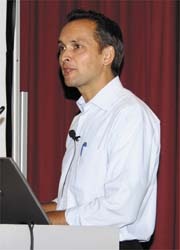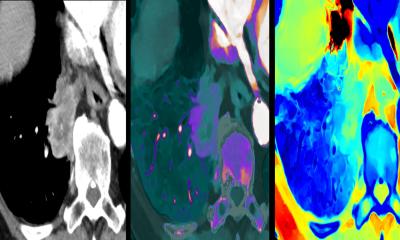Spotlight on patient safety
Medical errors occur in any part of the treatment process and typically involve the wrong medication, improper treatment, or incorrect or delayed test results. At its annual partner meeting in Berlin Philips reinforced its commitment to use its leading global position in healthcare speech recognition to drive technology advancements towards reducing medical errors and improving patient safety through verbal information capturing in the electronic patient record (EPR).

Last year the European Commission, DG Health and Consumer Protection, observed: ‘The health sector still lags behind other industries and services that have introduced systematic safety processes’. The Commission recommended: ‘…optimise the use of new technologies, for example, by introducing electronic patient records’.
‘What is a record without information?’ asked Marcel Wassink, CEO of Philips Speech Recognition systems at the partner event in Berlin.
In fact, the lack of adequate information at the point of care is a common cause of medical errors. A survey launched by the EU Directorate-General of Health and Consumer Protection found that almost four in five EU citizens classified medical errors as an important problem in their country. In Italy, where 97% believed that errors in medical care were an imminent issue, medical errors result in up to 90 deaths a day. In Germany, 38,000 patients are believed to die annually due to bad teamwork and communications, or poor IT support. In the UK, 850,000 medical errors are reported each year.
In his opening speech at the Berlin event, Marcel Wassink underlined that the current level of medical errors is not acceptable: ‘These numbers are a clear call to action for governments, healthcare organisations and technology providers,’ he said, emphasising that fast and accurate information in EPR systems can save lives. ‘A health record, however, is only as good as the information it contains.’
Where is the information?
According to Philips, a change of paradigm is needed to improve information availability in electronic health records. Physicians must be enabled to interact verbally with the EPR. Today, they can already capture all clinical information just by dictating their reports and have speech recognition convert those spoken words into information. This clinical information can be made available to all members of the multi-disciplinary clinical team. Instead of reviewing single data points the clinician is presented with a larger more comprehensive set of information that includes important trends in the patient’s condition – much to the benefit of patients and treatment quality.
As clinical knowledge is estimated to double every 18 months, the EPR must also work as a knowledge base for diagnosis and treatment. Given the massive volume of medical research, it is impossible for any physician to keep up with all new developments. A new study on a specific condition, or its treatment, might have been published just the day before the physician sees a patient. A knowledge base integrated into the EPR will help physicians find the link to these new research results.
In Berlin, Philips presented a concept demonstrator that incorporates the technologies of Map of Medicine (Medic to Medic), Health Language and Elsevier. Together, the companies will develop speech recognition applications that benefit from content integration, such as coding databases and medical path technology. The latter provides physicians with pathways for best-practice treatment guidance, to help close the gap between research and clinical practice.
Piloting physicians
Dr Nick van Terheyden, Chief Medical Officer for Philips Speech Recognition Systems, pointed out that physicians are trained to identify conditions based on the occurrence of signs and symptoms. But as medicine expands, and the number of diagnoses increases, it becomes harder to use this information to identify specific conditions and their cause. As medicine is undergoing an explosion of information, technology must be utilised to assist the clinical team in prioritising information, highlighting key data and guiding the care process. ‘Otherwise the unacceptable rate of errors will continue to occur and costs continue to increase, without a corresponding improvement in outcomes and quality of care,’ he added.
Dr van Terheyden, who was involved in developing one of the first EPR systems in the US, is convinced that if the EPR is able to provide real-time access to clinical information, the physician can become much more of a pilot, navigating and taking decisions as critical and relevant information is presented to him in a clear and
effective way.
‘Speech recognition and electronic patient records are reality. Although there is still much to be done to bring existing technologies to the workplace, the impressive results achieved in many hospitals show that the healthcare sector has embarked on a mission to establish modern information capturing technologies that help increase patient safety and the accuracy of treatment,’ said Dr van Terheyden.
30.10.2007











